
Introduction and design
Third time’s a charm, right? Well that’s what OnePlus will be hoping with its third-generation flagship smartphone, the OnePlus 3.
True to its ‘Never Settle’ mantra, OnePlus is pushing forward with its ‘flagship specs for half the price’ game plan, and with the new OnePlus 3 the signs are positive.
After the initial breakout success of the OnePlus One in 2014, the follow up from the Chinese outfit was a little lackluster, with the OnePlus 2 failing to reach the same heights as its predecessor.
If anything, OnePlus was a victim of its own success, as expectations for its second installment went above and beyond what the still-small firm was capable of.
Check out our OnePlus 3 review video below
OnePlus founder Carl Pei told me during a briefing for the OnePlus 3 that “people have very, very high expectations. We got very lucky with the first device, and people wanted more. We have to balance expectations with what we’re capable of”.
As you may expect then, from a flagship handset costing just US$399 (£309, around AU$450), OnePlus has indeed had to balance features against expectation, but with the OnePlus 3 the compromises are more acceptable.
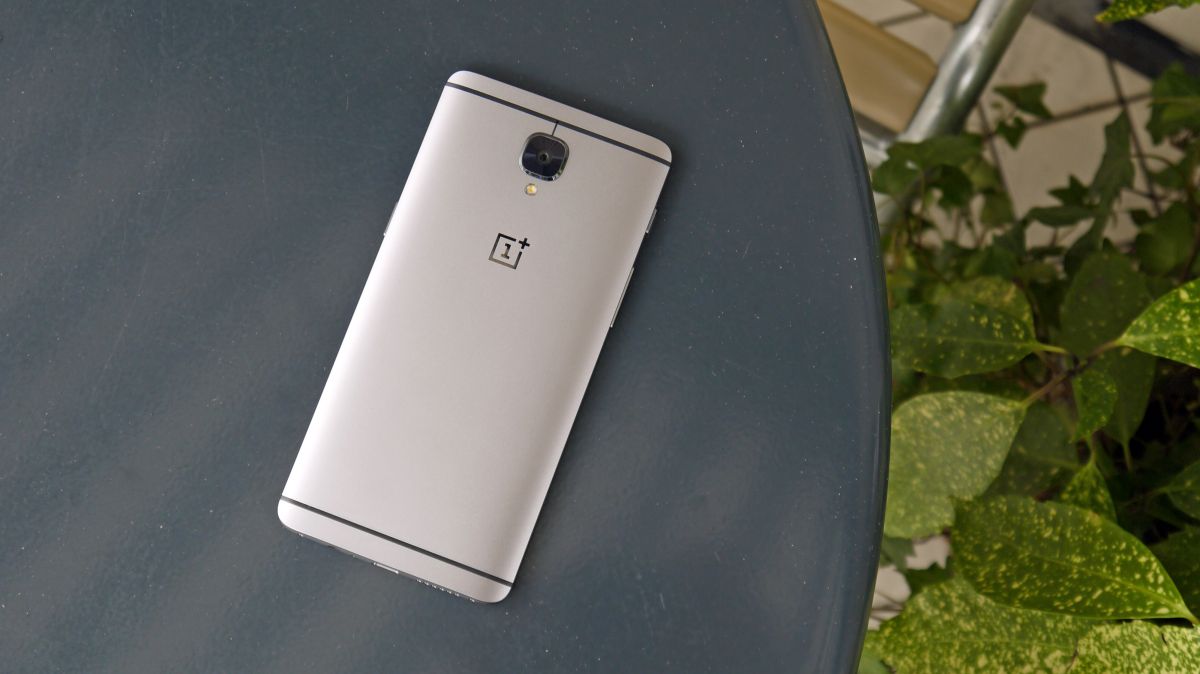
There’s no QHD resolution (you’ll have to make do with full HD), nor is there a microSD slot, and users have just one internal storage option: 64GB. But if you can look past those minor shortcomings, and embrace the power, premium design and performance the OnePlus 3 is offering, this is the firm’s best ever device.
With a Snapdragon 820 processor, 6GB of RAM, 16MP rear camera, 8MP front snapper, fingerprint scanner and 3,000mAh fast-charging battery, the OnePlus 3 has the tools – on paper at least – to take on the big names.
The OnePlus 2 claimed to be the 2016 Flagship Killer, and while it fell way short of living up to that boast, the OnePlus 3 may just be able to claim the title.
We got sent a special OnePlus 3 box, find out what’s inside!
Design
The single biggest advancement from the OnePlus 2 to the OnePlus 3 is the design. I forgave the original OnePlus One’s polycarbonate looks because the phone offered such fantastic value for money, but when the OnePlus 2 came round many people, myself included, wanted more than what was on offer.
Thankfully OnePlus has answered fan’s calls for a more premium design, delivering its first metal uni-body smartphone in the OnePlus 3, cut from a single slab of aluminum.
The result is pleasing. The metal chassis signals the evolution of OnePlus brand from a slightly shaky Chinese startup to a brand that knows what it’s doing, and knows what people want. It doesn’t break any new ground in terms of looks, with flashes of iPhone, HTC and Samsung, but it’s great to eyeball and hold in the hand.

It’s a shame that OnePlus hasn’t taken smartphone design in a new direction, but a quick look at the top phones across all the major manufacturers shows that there’s a fair amount of – how shall I put this – ‘borrowing’ when it comes to styling.
Front-on the OnePlus 3 isn’t anything special – it’s a relatively standard black slab coated in Gorilla Glass 4, with the main feature being the indented fingerprint scanner-come-home-button oval below the display.
The fingerprint scanner is much quicker at recognizing your digits and unlocking the OnePlus 3 than it was on the OnePlus 2, with a quoted time of just 0.3 seconds. While I can’t vouch for the exact speed I can see that it’s impressively quick, and I didn’t have any issues when using it. OnePlus says it’s faster than Apple’s Touch ID, and I’m inclined to agree.
Either side of the scanner you’ll find touch-sensitive navigation keys which are only visible when tapped, with a single white LED illuminating for a couple of seconds before disappearing into the bezel.

These are responsive and easy to hit, and you can program them in the settings menu, enabling you to perform extra functions with a hold action rather than a tap. You can also swap them round – so if you prefer your back key to be on the right rather than the left you can do just that.
As well as the toughened Gorilla Glass on the front of the phone, OnePlus has also included a factory-fitted screen protector to prevent scratches, but it’s a little annoying. It doesn’t cover the whole screen, and at times I could see the edge of the protector running down each side of the display, which distracts from the on-screen action.
Fortunately you can remove it pretty easily, and it doesn’t leave any nasty residue on the glass – but you’re unlikely to get the bubble-free finish if you try to re-apply it, so make sure you really want it gone before peeling it off.
Along the left side of the 7.35mm-thick OnePlus 3 are the volume rocker and notification slider. The latter has three positions: all notifications, priority notifications and silent, enabling you to quickly adjust the setting without waking the screen.
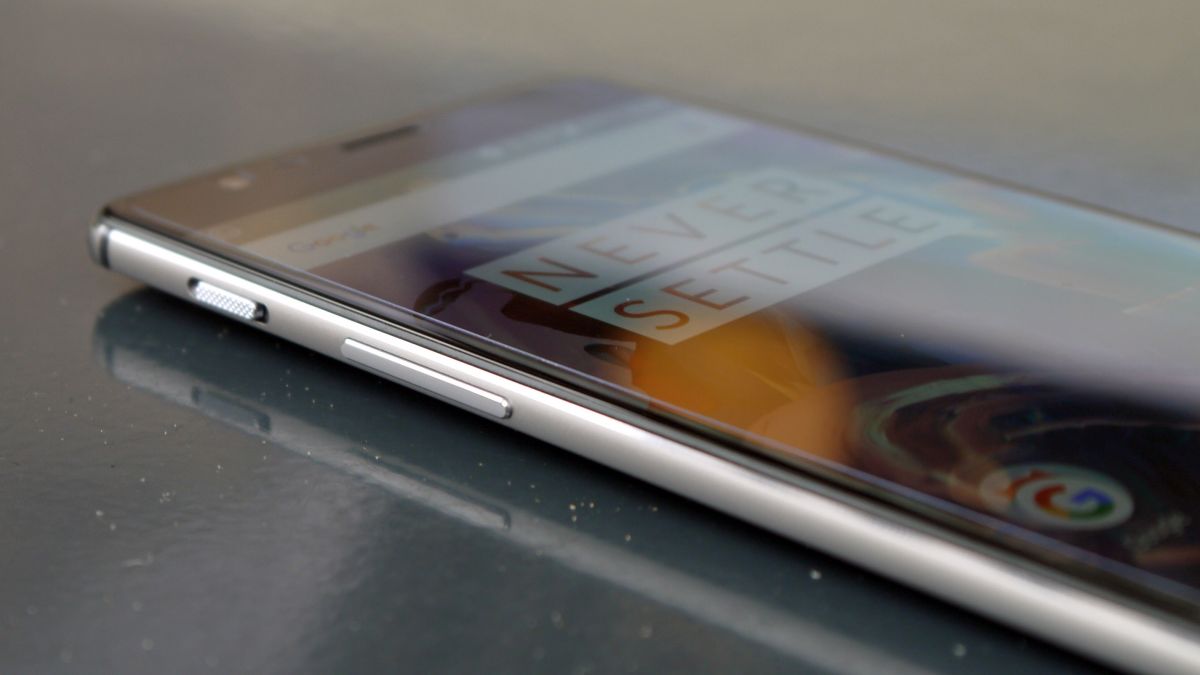
It’s a hat-tip to Apple’s mute switch on the iPhone, and it’s something I found very useful during my time with the OnePlus 3 – especially when it came to quickly muting the phone during meetings and cinema trips.
On the other side is the power/lock key, which sits below the dual-SIM tray. Yes that’s right – the OnePlus 3 can handle two SIMs. On some other devices, such as the Huawei P9, the second SIM slot also doubles as a microSD slot, but that’s not the case here – as mentioned, there’s no expandable storage option.
The explanation given to me by OnePlus’s Pei for why the company continues to shun expandable storage comes down to user experience.
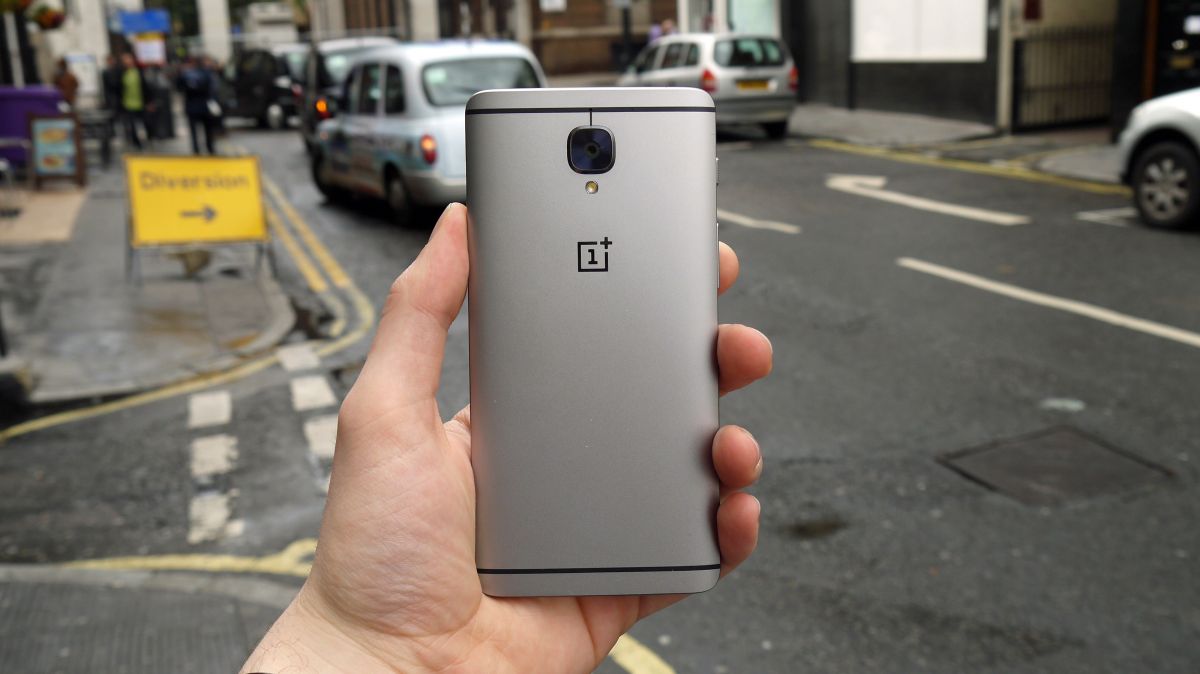
“MicroSD is a big ask [from our fans],” Pei explained, “but it’s not a good ask. It’s not a good user experience”. You may not agree, but that’s the thinking over at OnePlus.
The buttons are well positioned, and as long as your hands are big enough to grapple the OnePlus 3 you’ll be able to hit them without issue when using the phone one-handed.
There’s nothing on the top edge, while the base is packed with a speaker grille, USB-C port and headphone jack – OnePlus certainly isn’t ready to ditch the 3.5mm jack just yet, unlike Motorola with the Moto Z.
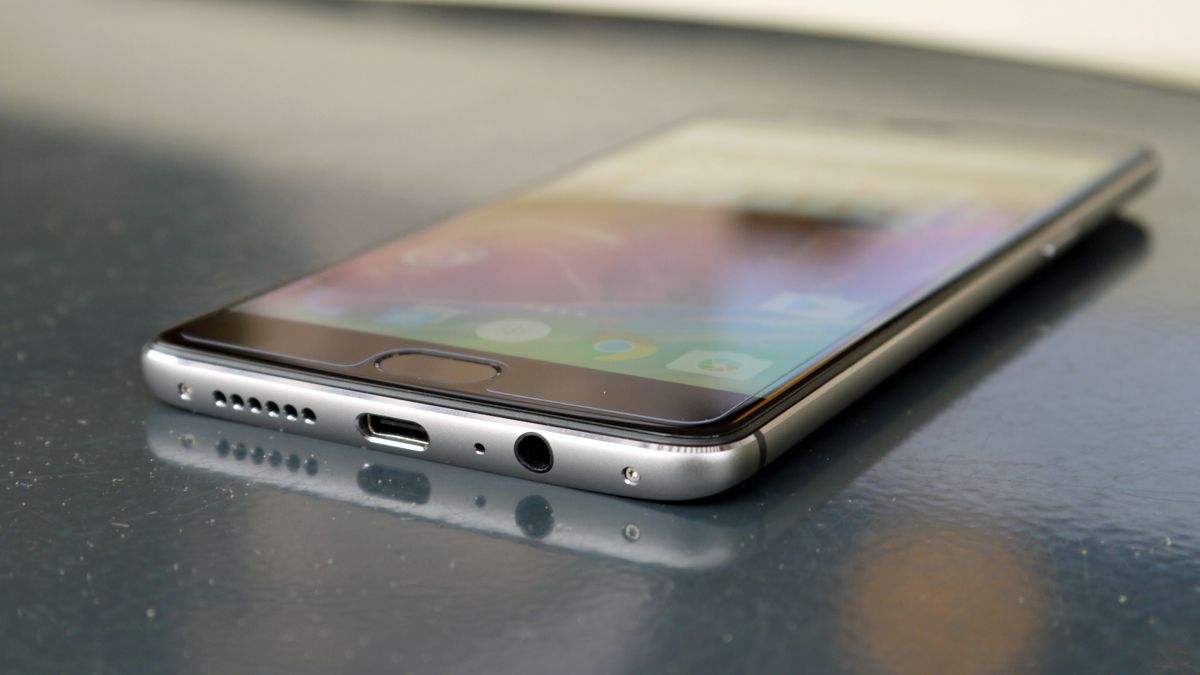
Moving round the back, the gently curving rear and the antenna bands at the top and bottom of the handset are reminiscent of the HTC One M9, while the square camera bulge has something of the Samsung Galaxy S6 about it.
It’s a pleasing premium look, if a little understated, and its arched backed means the OnePlus 3 sits nicely in the palm, enabling you to get a decent grip around what is a large handset.
The OnePlus 3 is a phone I really do enjoy holding, flipping it over repeatedly in my hand and gazing at it as it resides on my desk. There’s nothing complex going on here, but it’s that simplicity that I find alluring. In that sense it’s similar to Apple’s iPhone design, although the curved rear beats the flat backs of the Cupertino firm’s handsets.
Design-wise, OnePlus has done something special then. The OnePlus 3 doesn’t look out of place alongside the iPhone 6S, Samsung Galaxy S7, HTC 10 and LG G5, yet it’s almost half the price. For that, at least, it must be applauded.
Key features
Finely tuned viewing
With HTC joining Samsung and LG in the QHD resolution war in 2016, the hope was that OnePlus would follow suit, and give us some eye-popping pixel action with its third-generation device. Unfortunately, though, it’s stuck with a 5.5-inch full HD panel on the OnePlus 3.
It’s not exactly the same display as on the OnePlus 2, with the new handset boasting an AMOLED panel, giving you brighter, punchier colors. And OnePlus hasn’t stopped there either, as it’s tuned the display, creating something it’s calling Optic AMOLED.
This means there’s a greater emphasis on blacks and reds, which OnePlus believes makes for a better viewing experience, although for the most part it’s not really noticeable – the screen is just clear and vibrant, making gaming and watching movies an enjoyable experience.
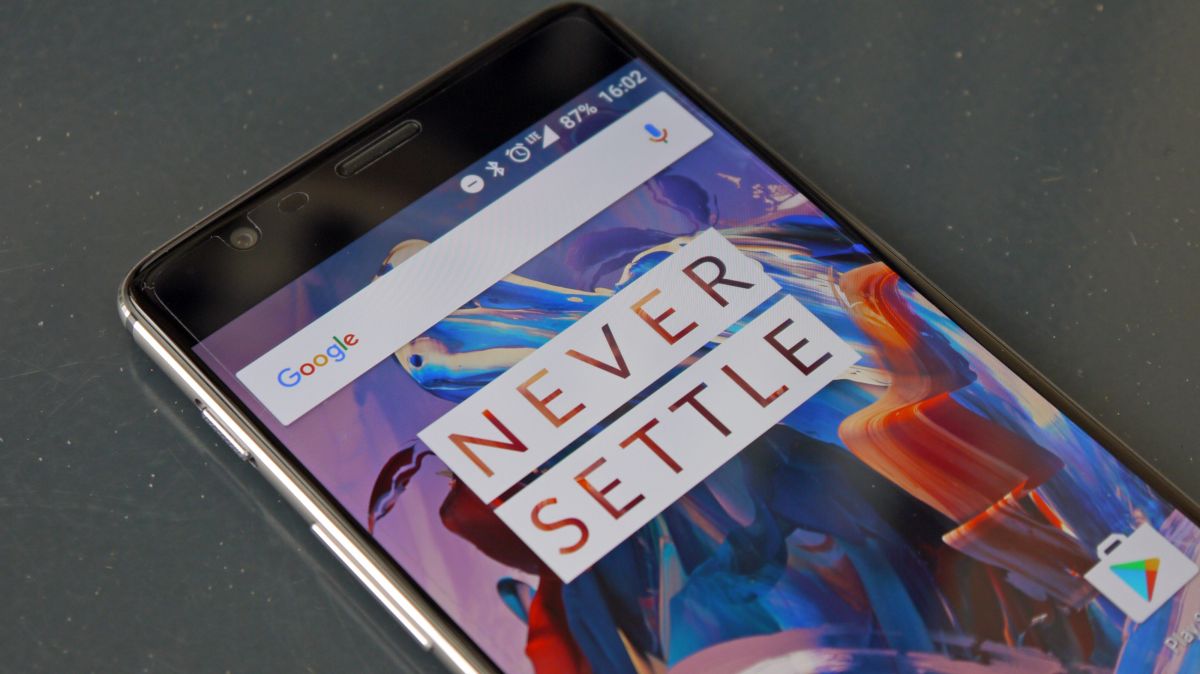
While it may not boast a QHD resolution, the full HD offering is more than good enough for most use cases, and I only really found myself yearning for more pixels when watching TV shows and movies.
Using an AMOLED display has enabled OnePlus to slim down the thickness of the OnePlus 3’s body, and reduce the size of the bezels either side of the screen, making for a more compact device, which is always nice.
The screen on the OnePlus 3 boasts a dual-polarizing layer, which means it should be easier to view in bright sunlight – and to be fair it does a pretty decent job. I didn’t have many issues seeing the display when out and about, and while direct sunlight will still cause a few problems, the OnePlus 3 puts in a solid showing in this respect.
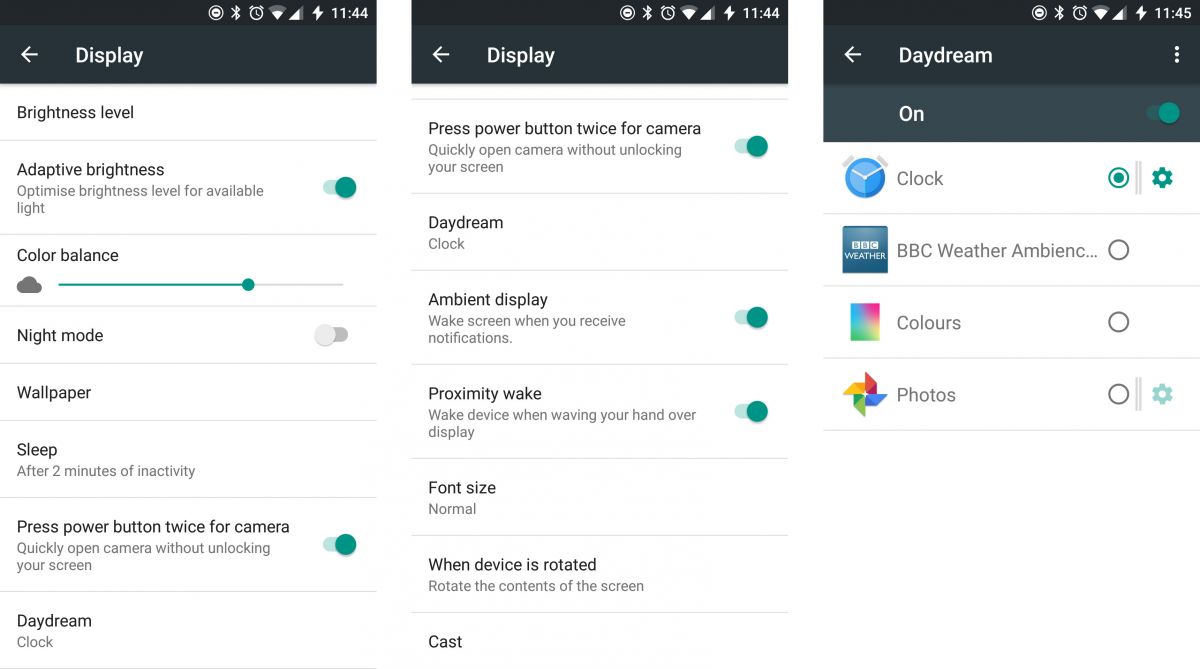
Another handy feature on the OnePlus 3 is its proximity display. Wave your hand over the front-facing camera when the screen is off and it’ll illuminate, showing you the time, and any notifications you have, in black and white.
It’s very similar to Motorola’s Active Display, so while it’s not an innovation on the part of OnePlus it is nice to have, and something I found myself using a lot.
Sorry, got to dash
The big talking point from OnePlus about its latest smartphone is its Dash Charge technology, which will give you ‘a day’s power in half and hour’, or so the firm claims.
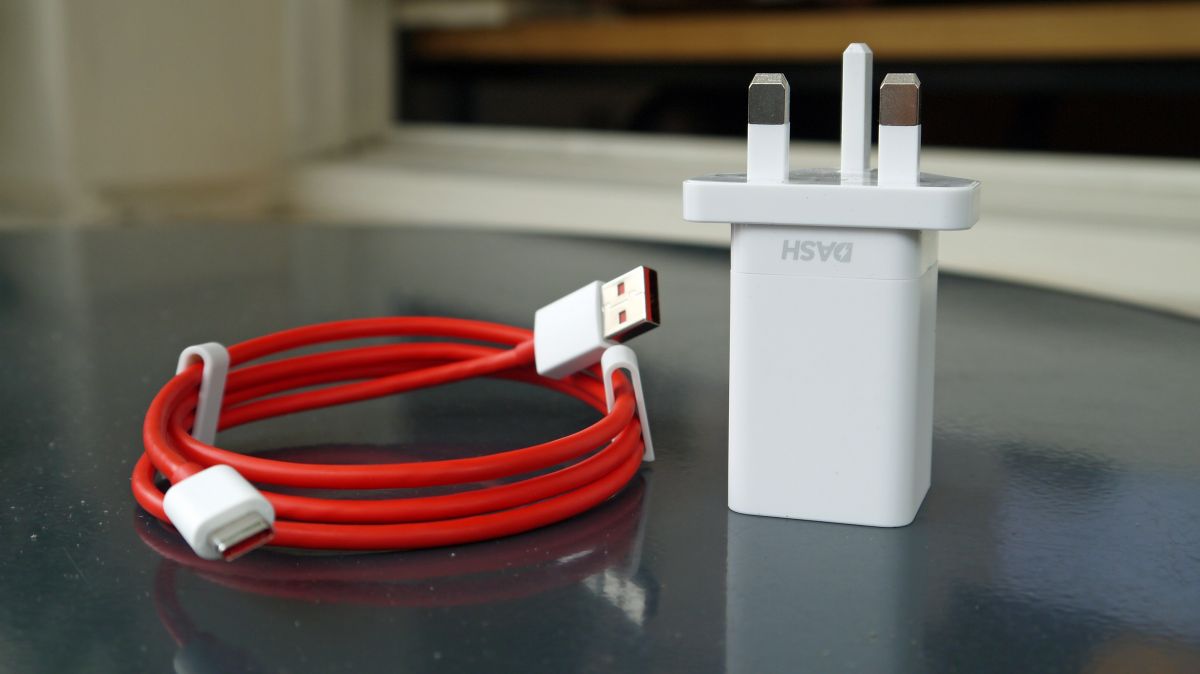
What does that mean? Well, plug in your OnePlus 3 using the Dash Charge plug block and thicker-than-usual USB-C cable that you get in the box with your new phone and you’ll see 60% of battery return to the 3,000mAh power pack in just 30 minutes.
That’s a touch faster than Qualcomm’s Quick Charge 3.0 tech that ships with the Snapdragon 820 chip – which the OnePlus 3 sports – but the Chinese firm decided to improve things on its own. You can see just how well the OnePlus 3 performs in our battery section.
Snappy snaps
While Samsung downgraded the number of megapixels in the rear-facing camera on its 2016 flagship, OnePlus has upped its count here, with a 16MP snapper on the OnePlus 3 toppling the 13MP sensor on its predecessor.
OnePlus says its camera makes it hard to take a bad photo, with auto HDR, Phase Detection AutoFocus and Dynamic De-noise. You can also capture photos in raw format, and the manual mode allows you greater control over settings such as ISO, white balance and shutter speed.
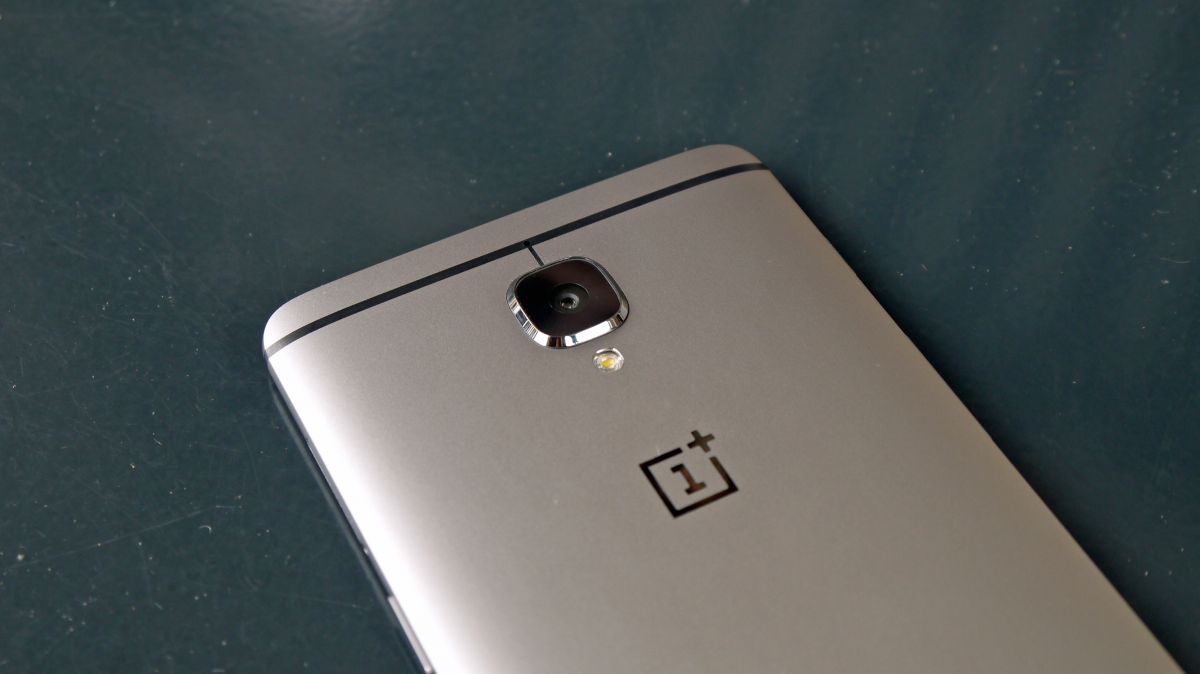
It’s certainly not a bad offering, but as you’ll see in the in-depth camera section it doesn’t always shine, and the more expensive flagships do appear to have the OnePlus 3 beat in this area.
Round the front there’s an 8MP camera, which OnePlus says is the same snapper found on the rear of the iPhone 5S – which isn’t a bad claim to fame.
Performance and specs
The OnePlus 3 is absolutely packed full of power. Qualcomm’s top of the range Snapdragon 820 processor, which is also found in the HTC 10, LG G5 and the American variant of the Galaxy S7, is joined by a simply huge 6GB of RAM.
That’s more than any other top-end flagship phone currently on the market in the Western world, and raises the question of whether anyone actually needs that much power in their smartphone.
I posed that question to OnePlus, and a spokesperson told me “the benefit of 6GB of RAM just translates to better performance now and in the future, especially in regards to multi-tasking and app launching”.
Now, I’m never going to complain about extra power – unless it kills battery life – but I can’t say the additional 2GB of RAM in the OnePlus 3 over the OnePlus 2 is noticeable. Performance is good – very good in fact, with smooth navigation and swift app load times – but it doesn’t set itself apart from the pack.
OnePlus claims all this extra power gives its third-generation handset a 35% performance increase over the OnePlus 2, and a 40% graphics boost over its predecessor. That’s mainly down to the gains the Snapdragon 820 chip offers over the 810 found in 2015’s model, which puts the OnePlus 3 on a par with its flagship competition.

Running the Geekbench 3 app on the OnePlus 3 a few times generated an average multi-core score of 5425, placing the handset in the middle of 2016’s flagships (above the LG G5 and HTC 10, below the Galaxy S7 and Huawei P9). It also comfortably beats the OnePlus 2 (4795) and iPhone 6S (4417) from 2015.
There is one area in which the phone seems to struggle though, and it’s a bit of an anomaly. Dive into Messenger and the OnePlus 3 can be a little sluggish when it comes to finding a new contact to send an SMS to.
I mainly experienced this issue during the first few days of usage, with the handset settling down after that, but still, every now and then, it feels a little slow when I come to send a text.
As I’ve mentioned, the OnePlus 3 is only available in a 64GB variant, and there’s no microSD slot to enable you to expand on this. For most users this will be plenty of space, but the storage limitation has always been a contentious point for some OnePlus fans, as it feels like the brand continually flies in the face of its own ‘Never Settle’ mantra when it comes to expandable space.
NFC, however, makes a welcome return on the OnePlus 3 after being surprisingly left out of the OnePlus 2 – which will please fans of the contactless technology, especially now that Android Pay is landing in more countries. There is something futuristic about paying with your smartphone, and it still draws confused looks from shop assistants.
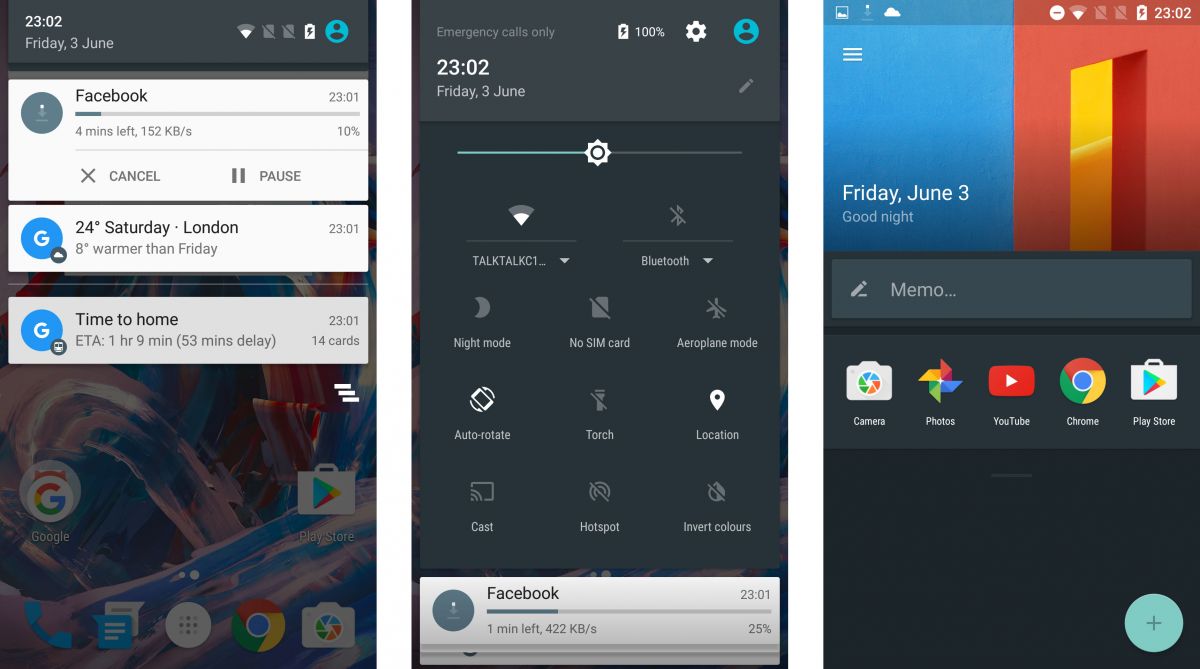
It also made it easy for me to pair my Bluetooth Plantronics headphones with the phone, which is nice.
On screen you’re greeted by Android Marshmallow, and to the untrained eye it appears to be the stock version of Google’s mobile platform – but OnePlus has done some tinkering.
The OnePlus 3 runs the Chinese firm’s own Oxygen OS interface, which adds additional features and functions, such as the proximity display mentioned on the previous page. OnePlus even lets you unlock the bootloader if you want free-range access to the handset for some serious tinkering.
Oxygen keeps the general look and feel of Android intact, while adding things such as Shelf – accessed by swiping from left to right on the home screen.
Shelf gives you a space to put key contacts, frequently used apps and your favorite widgets without cluttering up your main home screens. You can also create memos and reminders, which gives it a good breath of functionality. I personally didn’t use Shelf all that much, but it will appeal to some.
Elsewhere, OnePlus’s gestures return, enabling you to trace an O (camera) or V (torch) on the lock screen, even when the screen is off, to launch those functions with minimal effort.

You can also switch on Double Tap to Wake, making it easy to bring the screen to life without having to hit the power or home keys – annoyingly though, you can’t then double tap to put the phone back to sleep.
Something I was pleased to see during the initial setup of the OnePlus 3 was the option to enable the SwiftKey keyboard straight out the box. There are plenty of excellent third-party keyboard offerings available on Google Play, but SwiftKey is my personal favorite, and having it ready to go right away is a real plus point.
It’s more accurate, quicker and more feature-packed than the stock Android offering, which makes typing on the OnePlus 3 much easier. It’s just about possible to type one-handed, assuming your palms are big enough, but for peace of mind I tended to opt for the double-handed approach.
The multi-tasking panel has also been given some OnePlus love, with a ‘clear all’ option at the bottom of the cascade of app thumbnails. That’s joined by two other options: a link to app management, and a ‘clean all’ option.
While clear all will shut apps currently chugging along in the background, clean all stops all background processes, freeing up more RAM and hopefully being a little kinder on battery life.
Camera
Editor’s note: Just 24 hours before the review embargo lifted OnePlus pushed a software update to my OnePlus 3 with a fix relating to HDR in the camera app. I’ve not yet fully tested the camera since then, so I’ll be updating this section once I’ve given it a thorough test.
The OnePlus 3 comes well equipped with camera prowess. On the rear you get a 16MP Sony PDAF sensor, while on the front an 8MP snapper is apparently the same unit found on the rear of the iPhone 5S.
That’s a nice step up from the 13MP/5MP arrangement on 2015’s OnePlus 2, but with Apple stalling at 12MP on the iPhone 6S and Samsung dropping to the same count on the Galaxy S7, do we really need 16 million pixels on our phone?
OnePlus seems to think so, and with its Smart Capture Technology it reckons it’s got a strong snapper that makes it difficult to take a bad picture.
It’s packed the camera on the OnePlus 3 full of features, including Phase Detection AutoFocus, OIS (optical image stabilization), EIS (electronic image stabilization), Auto HDR, HD Mode and Dynamic De-Noise.

These are designed to make your photos sharper, clearer, brighter and more in focus – but the results are varied.
The camera app is easy to launch, and if you have gestures turned on simply tracing a circle on the screen of the OnePlus 3 will open the application. The app opens swiftly, allowing you to get snapping asap.
In terms of design OnePlus has kept things simple, with minimal clutter. A settings button next to the shutter key displays a small bar above it with just three controls: timer, grid lines and aspect ratio.
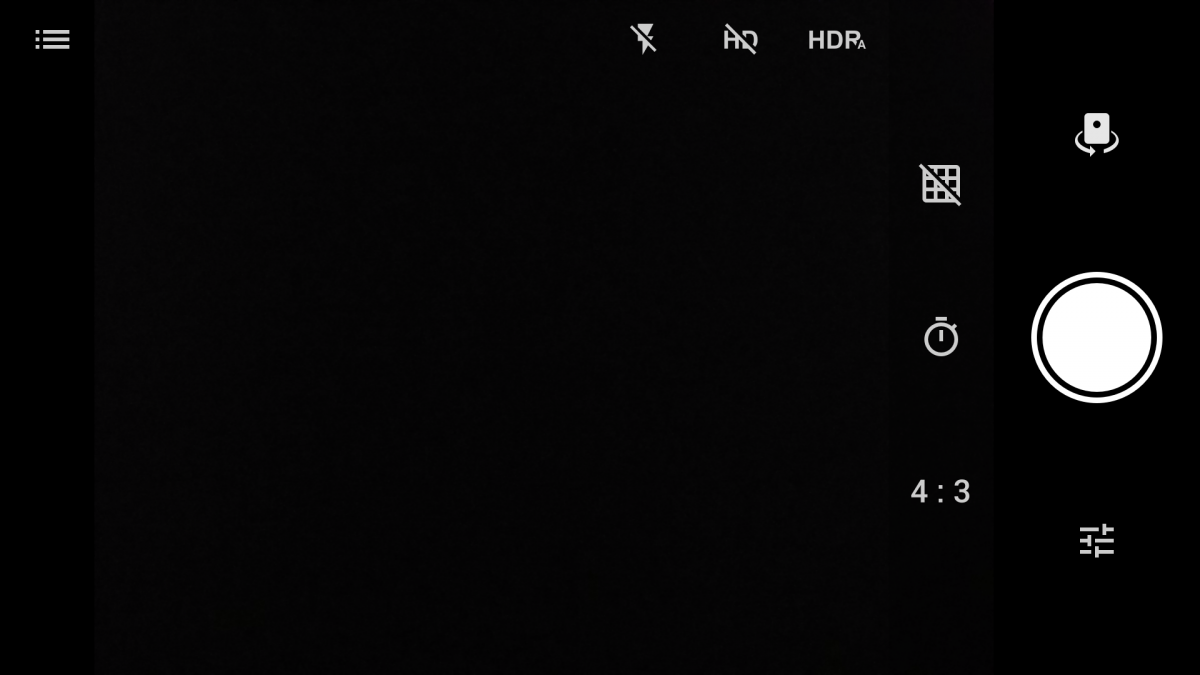
Meanwhile, at the top of the display a toolbar provides toggles for flash, HDR and HD. There’s also a menu icon, which enables you to jump between a range of modes including panorama, manual, video and slow motion.
You can shoot 4K video with the OnePlus 3, but by default it’s set at 1080p. Tap the menu icon next to the record key and you’ll be able to cycle through 720p, 1080p and 4K resolutions.
There isn’t the wide range of cheesy effects and filters that other manufacturers offer, but manual mode gives more experienced shooters an extra level of control on the OnePlus 3.
Switch over to it and you’re able to adjust shutter speed, white balance, ISO and focus, enabling you to fine-tune each and every shot.

For those not wanting to mess around with additional settings, OnePlus reckons its standard shooting mode can still deliver standout performance.
HDR is on in auto mode by default, but engages only when the OnePlus 3 deems it necessary. You can tap the icon to toggle it on (or off), but for most shots you’ll want to leave it in auto mode – that is, if you don’t want to use the HD mode.
HD mode enhances sharpness and detail in your shots, but can’t be used alongside HDR – it’s one or the other, which is a bit of a shame. While there are some slight improvements in quality when HD is selected, it’s not enough to really make a difference.
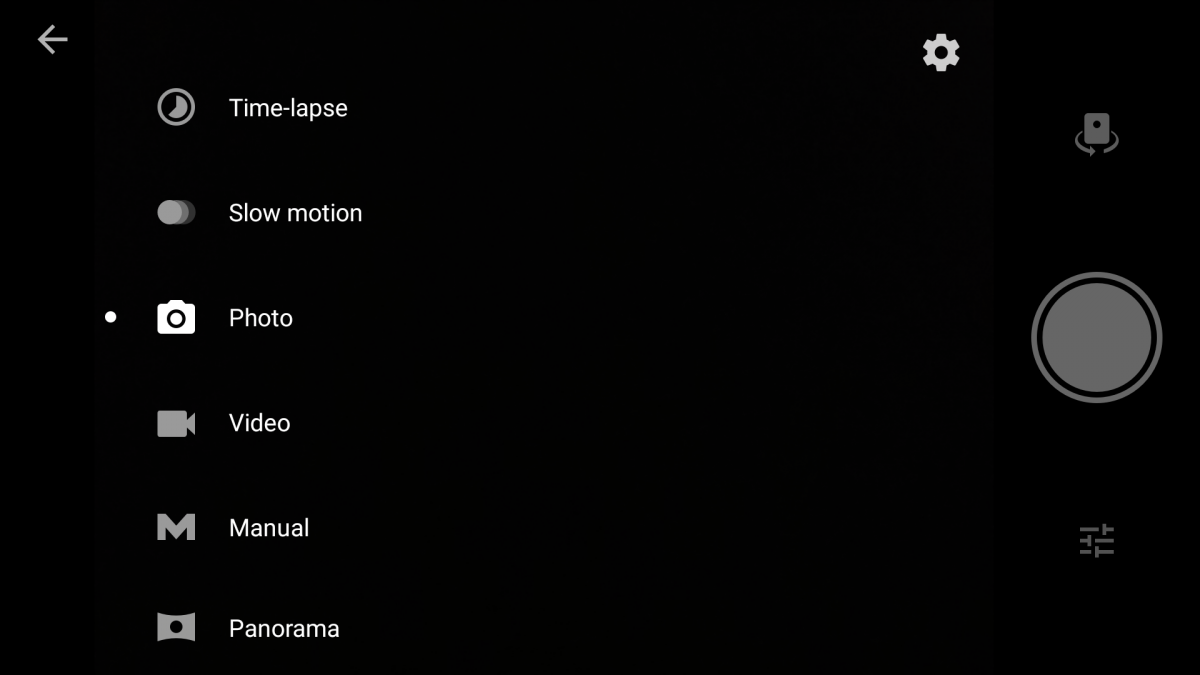
There is, however, one very annoying feature of the OnePlus 3 camera experience, and it comes after you’ve taken a photo, when you slide from right to left to view the picture you’ve just taken. At times, for a split second the image looks sharp and then will quickly change, often to a less detailed finish – and there’s no option to return to the image you saw for that brief moment.
I suspect this has something to do with Dynamic De-Noise, a function that OnePlus says reduces background noise in post-processing. I’d argue, though, that it’s removing detail from shots unnecessarily, and that’s a shame.
Results then, are mixed. In good light and without rushing the OnePlus 3 takes solid snaps, but if light is lacking and you rush your shots, pictures can be blurry and a little dark.
The shutter speed is impressively fast, but I found the focus struggled to keep up at times. I had to retake several shots as the originals turned out to be blurred.

Meanwhile round the front the 8MP front snapper comes with a beauty mode and smile sensor. The former is a similar offering as found on other phones, smooth skin and increasing eye size, but the latter makes selfies a whole lot easier.
Just hold the OnePlus 3 up to your face, flash it a smile and you’ll get a three second countdown timer. It works surprisingly well, although at times it’s over sensitive and I set it off again when lowering the handset. This resulted in some rather unsightly up-chin shots – thank god for delete.
Camera samples





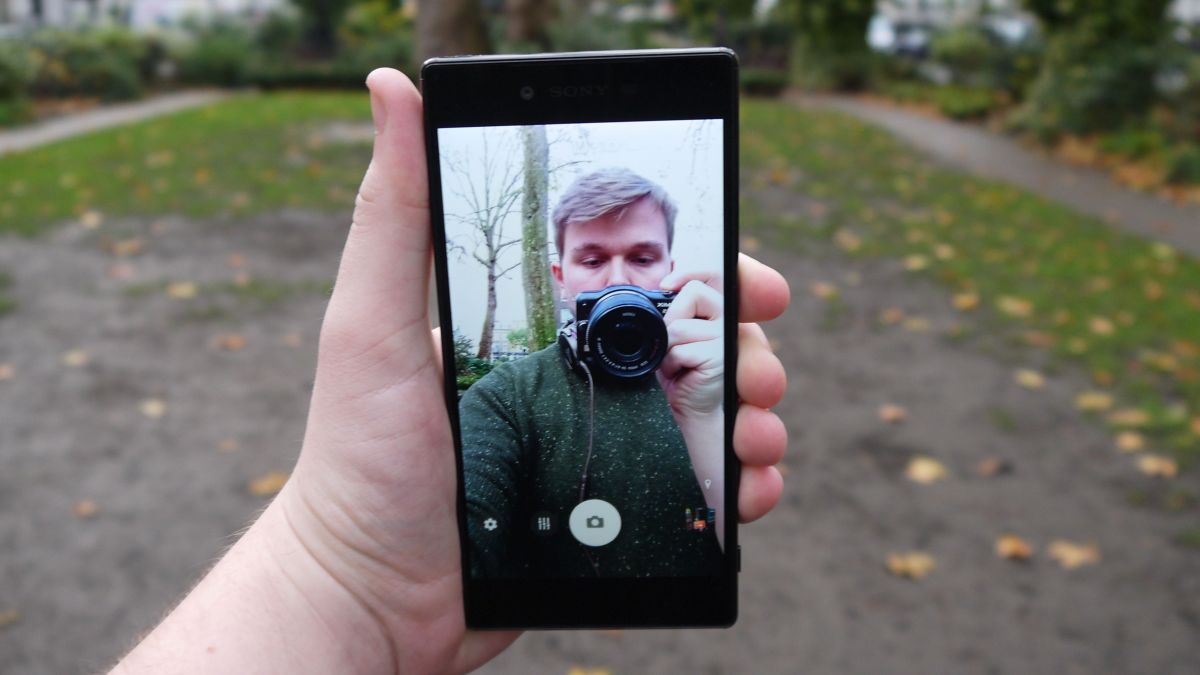
Battery life
The OnePlus 3 comes with a non-removable 3,000mAh battery – which is smaller than the power pack found in both the OnePlus 2 (3,300mAh) and the OnePlus One (3,100mAh).
That’s slightly worrying, as neither of those handsets lasted more than a day before a recharge was required, and it’s the same story here.
The thing is, OnePlus is happy with quoting one day of usage from a single charge. While the likes of Samsung, Sony and co like to claim their devices will give you up to two days of use, thanks to varying levels of power-saving modes ranging from mild to aggressive, OnePlus isn’t been drawn into that fight.
A smart move or a stupid one? I’ll leave you to decide, but OnePlus is confident that it has an ace up its sleeve which makes everything okay.

That ace? Dash Charge. On the surface this is just another fast-charging tech – and digging a little deeper that’s still the case. Qualcomm’s Snapdragon 820 SoC comes with the firm’s Quick Charge 3.0 technology, but OnePlus has developed its own offering which it claims is faster – and it is.
Plug the OnePlus 3 into the Dash Charge block using the chunky USB-C cable, both of which you get in the box, and you’ll see the handset regain 60% of its charge in 30 minutes.
OnePlus has also reduced the amount of heat generated in the device during charging by shifting the main power regulator to the plug block. This means the OnePlus 3 only gets warm, not hot during a top-up, although the block does warm up a bit – the heat has to go somewhere.
This also means performance isn’t throttled during fast charging, allowing you to continue playing Real Racing 3 without excessive heat generation or laggy feedback.

Charging is impressively quick, and very useful – but only to a point. It’s all very well OnePlus saying you don’t need the handset to last more than a day, because it can be topped up quickly – but you have to have the charging block and cable with you at all times.
Sure, you can use a standard USB-C cable and block, but refuelling times will be slower. I like having a charger at home, one at work, another in the car and a fourth in my rucksack – in my case that’s three additional Dash chargers I need to purchase, and the cost quickly stacks up.
And you will need to top your OnePlus 3 up during the day if you’re a heavy user.
Even with moderate use, most days I found myself switching on the Battery Saver as I hit 15% come early evening. General usage included a couple of hours of Spotify streaming, around an hour of gaming, and various messages, social network usage, email purging and web browsing throughout the day.
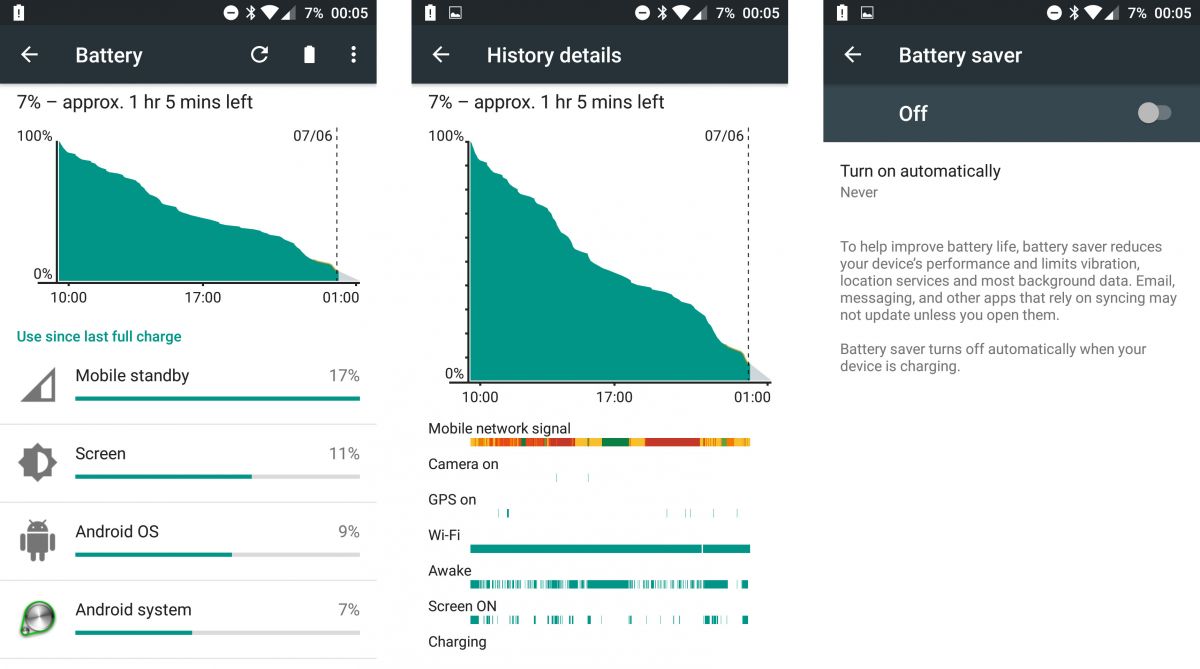
That allowed me to stay connected from 7am, when I took the OnePlus 3 off charge, until around 11pm, with the Battery Saver mode just about enabling the phone to limp back to my bedside table and the salvation of the charging cable.
I ran the 90-minute, full HD TechRadar video test on the OnePlus 3, with screen brightness at max and the handset connected to Wi-Fi, with accounts syncing in the background. After the hour and a half was up the battery level had dropped from 100% to 77% – a loss of 23% isn’t the best result we’ve seen, but it’s also not terrible.
OnePlus claims you’ll be able to watch over seven hours of 2K video on a single charge, with screen brightness set to medium. Going by our test you’ll certainly get six hours of viewing at full brightness (with HD playback), so OnePlus may be on to something there – although I still think seven hours will be a push for the handset.
While it’s disappointing that the OnePlus 3 can’t go more than a day on a full charge, it is par for the course at the moment, with most of the top flagships in exactly the same position.
OnePlus has opted for a thinner, more premium design at the cost of a smaller power pack, and while everyone may not agree with that strategy it doesn’t put the handset at a particular disadvantage compared to its rivals.
Verdict
The OnePlus 3 is excellent. The Chinese startup has improved on a number of issues fans had with the OnePlus 2, wrapped it in a new premium suit and managed to keep the price low enough to worry the established names in the market.
There are a few short comings, but compromise is essential for a US$399/£309 smartphone with this level of spec, and on the whole they don’t really limit the OnePlus 3.
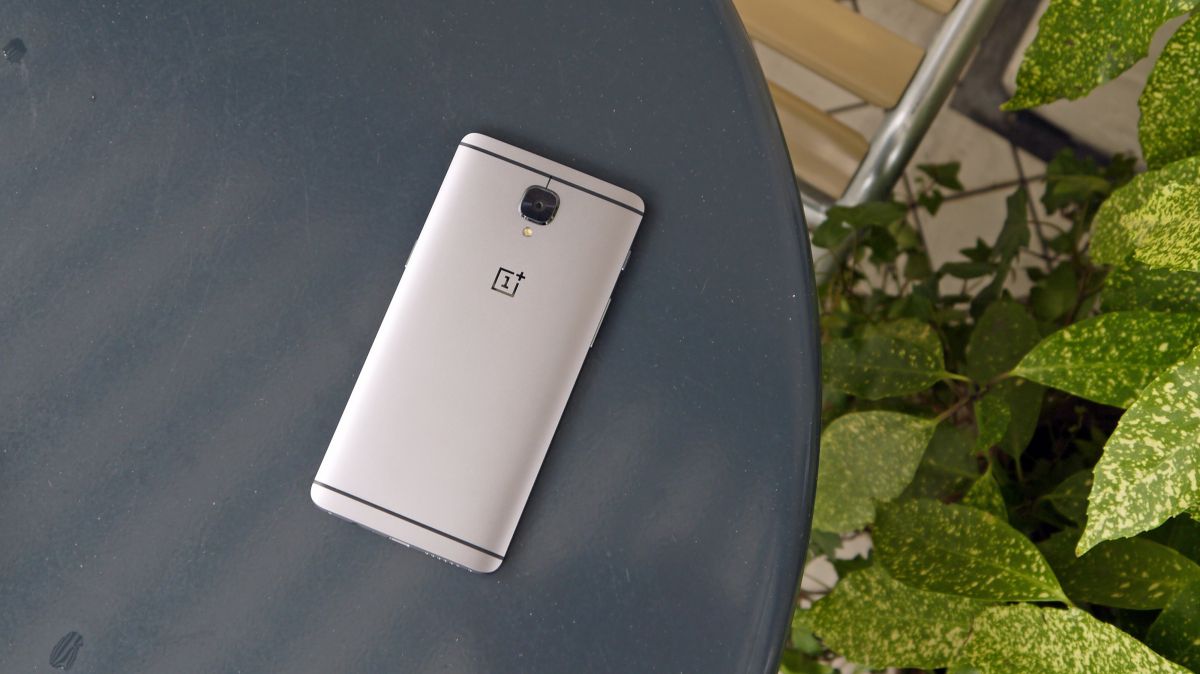
We liked
I really, really like the design of the OnePlus 3. It may have borrowed most of its looks from competitors, but its simplistic design looks and feels great. This is a phone which could easily be mistaken for a handset double its price.
There’s also a whole lot of power squashed inside the OnePlus 3’s aluminum frame, with the Snapdragon 820 processor and huge 6GB of RAM ensuring it’s future proofed for the next few years at least.
While the display may not be QHD, the decision to go for an AMOLED panel on the OnePlus 3 makes everything much more vibrant, and the Oxygen OS interface keeps the stock Android Marshmallow design while adding some genuinely useful features of its own.
The proximity display you wake by waving your hand over the phone like a Jedi is not only cool, it’s something I use on a daily basis, while the greater settings controls and customization options allow you to fine tune the interface to your liking.
We disliked
It’s great to see OnePlus including NFC in its third generation flagship, but expandable storage has been shunned once again, and that’s sure to infuriate some fans.
You also get just one storage size – 64GB – giving users less flexibility when it comes to purchasing the OnePlus 3. For most, that will be more than enough space, but considering the developer focused fan base OnePlus has the lack of a microSD slot is still a little surprising.
The camera isn’t as strong as I’d like, or OnePlus promises. It’s certainly not a poor offering, but if you compare it to the Samsung Galaxy S7 there’s only one winner – and it’s not the OnePlus 3. The strange detail loss on some pictures immediately after capture is also an odd quirk I hope gets ironed out with a software update.
Battery life is another area where the OnePlus 3 could do better. It will last a full day, but no more and you’ll more than likely have to enable the power saving mode for the final few hours. That said, the Dash Charge technology works very well, and makes a quick blast before leaving work enough to last you late into the night.
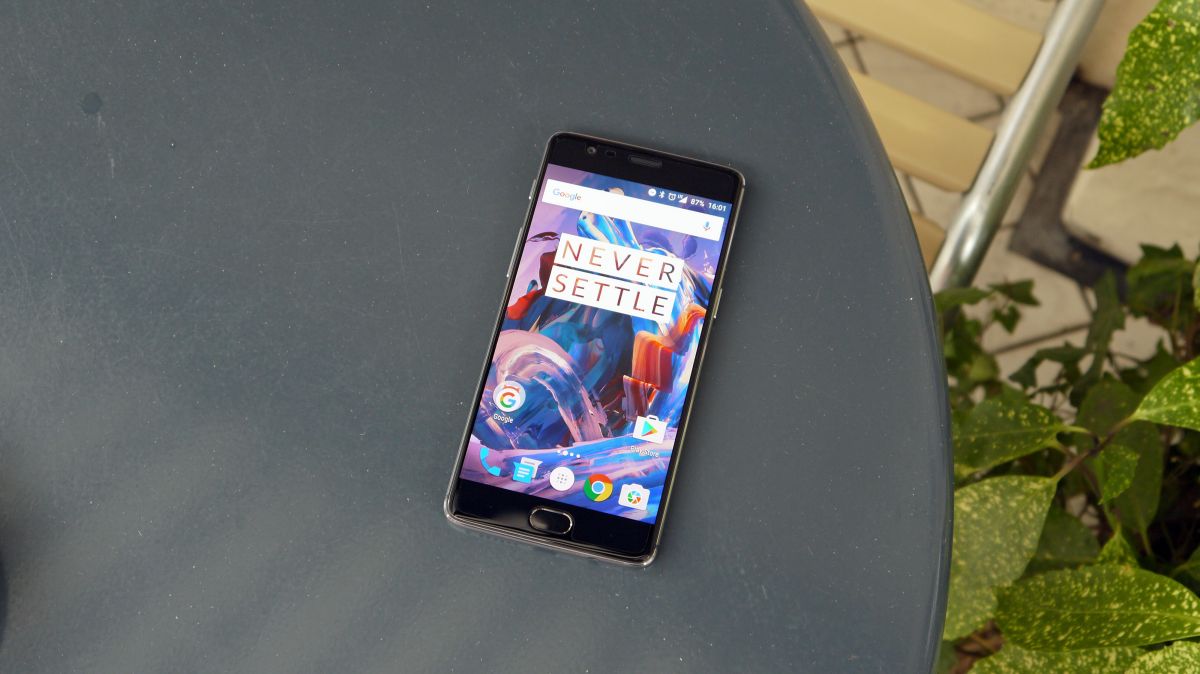
Verdict
I’ve already said it, but I’ll say it again, the OnePlus 3 is excellent. The Chinese firm needed to pull something out of the bag in 2016. The OnePlus 2 was another solid phone, but it didn’t break enough new ground and its simply insane claim to be a “2016 Flagship Killer” was massively misguided.
I’d happily slap that title on the OnePlus 3 though. It goes toe-to-toe with the high-end flagships of 2016. Sure it doesn’t have a QHD display, expandable storage or a world-class camera, and battery life doesn’t set it apart, but considering the money you’ll be parting with I’m okay with all of those.
If you’re looking for the best phone in the world, this isn’t it – take a look at the Samsung Galaxy S7 and Galaxy S7 Edge – but if you want a flagship phone without the expense the OnePlus 3 is a handset you must seriously consider.
And with OnePlus ditching its irritating invite system, it’s never been easier to pick up a handset – so why not make it the best phone OnePlus has ever made, the OnePlus 3.
Source: techradar.com










































Personally I'd go for the OnePlus 3. Sleeker design, and it's closer to stock Android in terms of look and functionality.
Hello John, nice review as always.. I know you lot at TR are quite difficult geezers to please, but your colleague Ian showered a lot of praises on Xiaomi Mi5, I have just seen the 128gb variant on a reseller website for £330 .. If you are in the market for a new phone, will you go for the One plus 3 or the Xiaomi Mi5 considering you get 64gb extra and a difference of give or take £40 at most..cheers from a big fan..
Thanks! It's a factory fitted screen protector. It can be easily removed and it doesn't leave behind any residue.
Having gone through 3 glass rear covers on an Xperia, I think metal construction is by far the best option!
No pre-order required. You can go right ahead and buy it. Currently the UK site says it'll ship within 4 days.
Sadly, not a lot of phones support Google Project Fi … so I'm stuck with my Nexus 6 but I do love the phone. I came from a Oneplus One to the Nexus. That was a great phone. But, at least my phone bills are always low low low …. $25 to $30 a month including all fees and taxes. Hard to say that about other services. In fact, My Nexus 6 paid itself off this month or next come to think about it.
After owning both the One and currently a Two, i must say i am awfully tempted to preorder it, and it's convenienly announced the day before payday…
Dual SIM 4G (as Moto X Play) or first SIM 4G and second 2G ?
nice video review – will read article – Ordered already (!!) as need replacement phone and have faith in the Company (Let's see).
QUESTION – What's the very fine vertical black line down the right side of the screen (I think I can see one on the left too) ? Video artifact or something to do with the phone/screen/bezel.
It does feel lovely though. What would you like to see from a design aspect? Am interested to hear your thoughts
Both are 4G
Surprise, surprise; another conformist all metal phone.
What is this obsession? So dull. Everyone copies each other – boring.